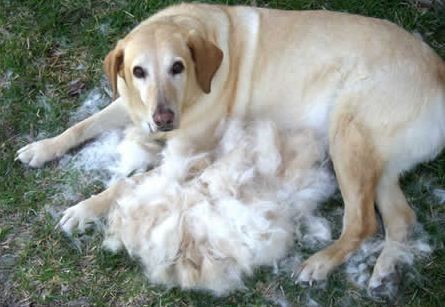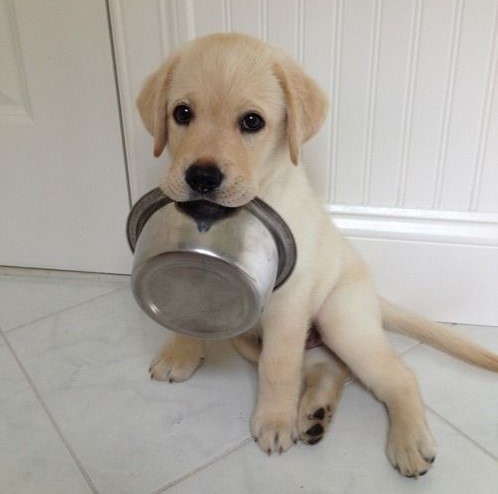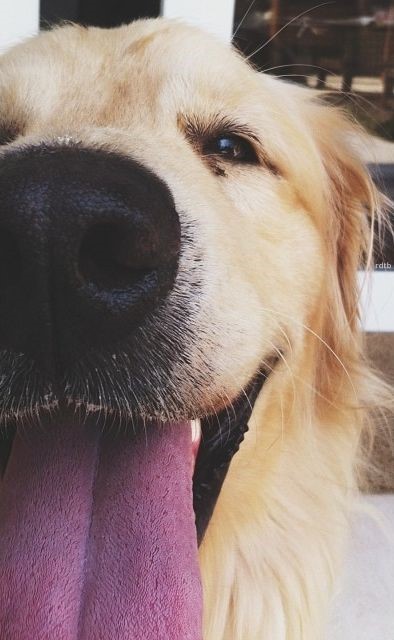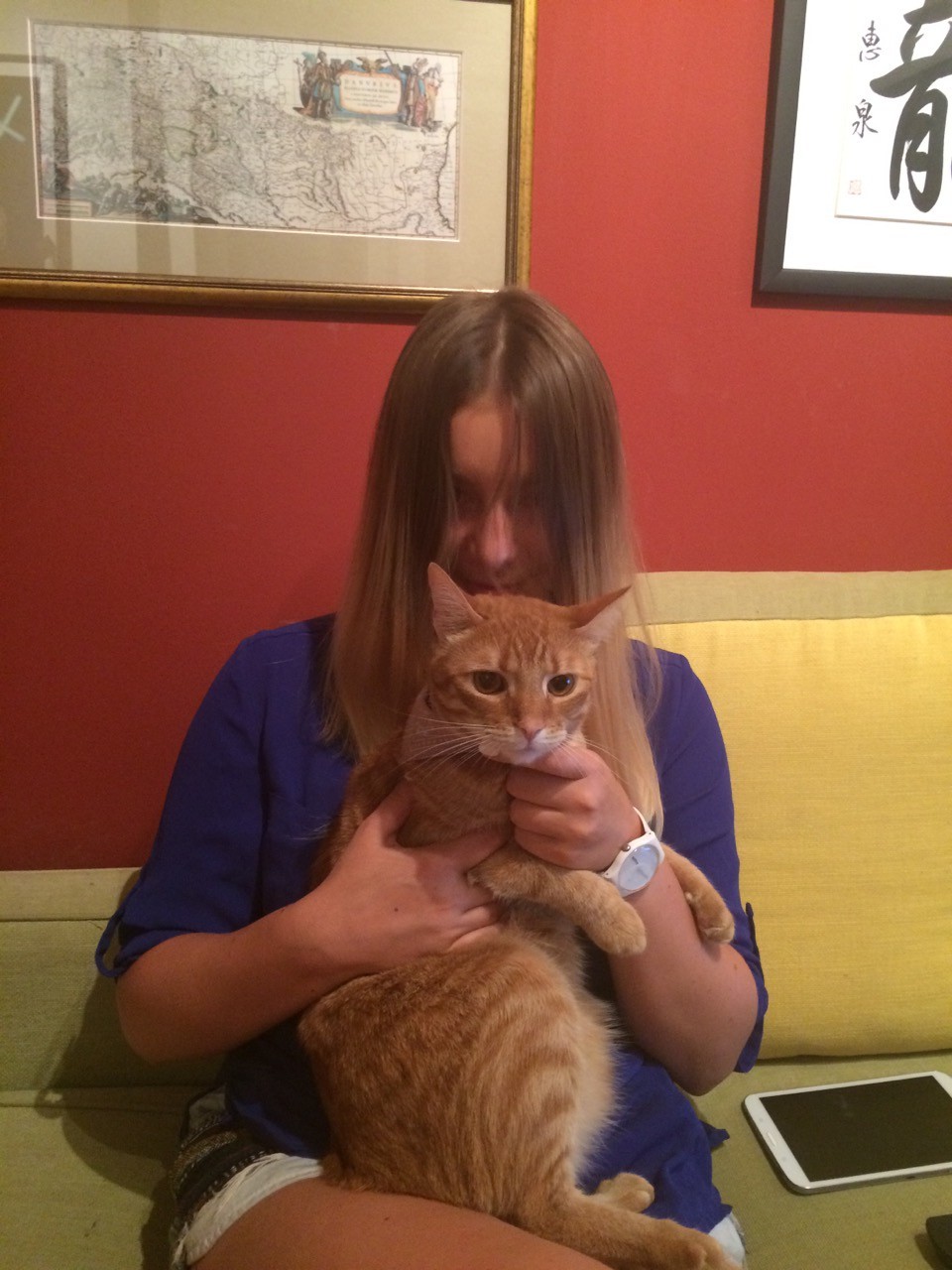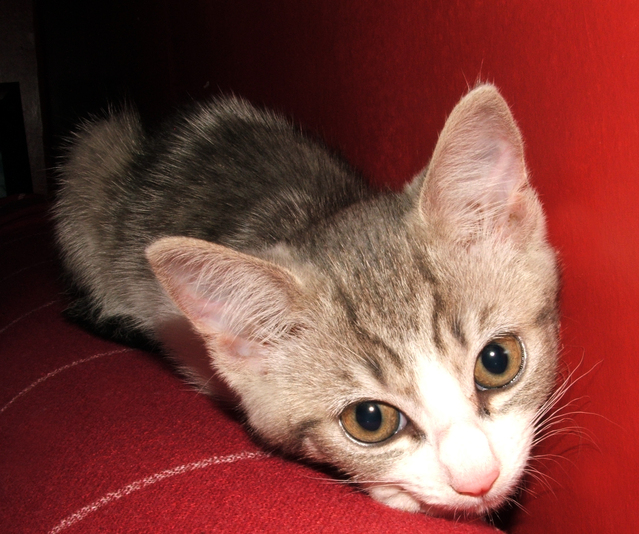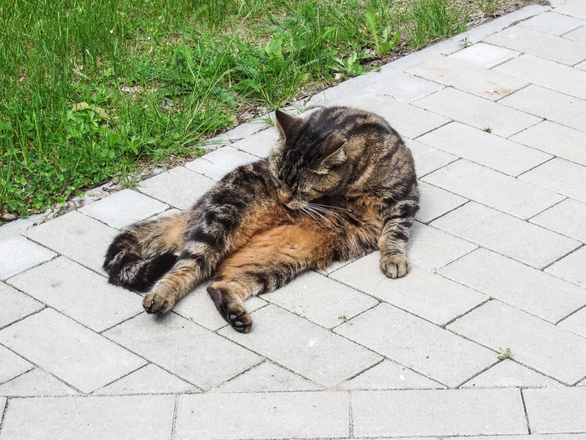This time around, we’d like share the work of some new writers (and one talented artist) with all of you…
The cartoon you see above was created by Dan Rosandich, and aptly illustrates what most dog owners are quite familiar with: doggy “Facebooking”, aka “checking pee-mail”. 😀 More of Dan’s work can be found at DansCartoons.Com.
Next, a short piece about shedding…
How Much is Too Much Hair and How to Deal with It?
They drive me mad. Yes, you are right. Those little fur balls, especially around spring and fall are what I am talking about. The first advice I can give you: accept it. Your beloved dog will shed one way or the other. The next stop is dealing with it. But how?
I have two dogs, Brando and Astoria and a cat Archibald. Yes, they live together in the same house. Don’t make me start talking about that! Anyway, I will just say that having them in the house during shedding seasons is not what I consider a clean house. However, as we love our pets so much, we strive towards finding a solution. During years of having pets, I learned a few tricks of my own.
As I have said, dogs usually shed in fall and spring. If your dog is kept indoor, you can expect year-round shedding. If you notice that your pooch sheds more excessively than usual, the reasons behind it may lie in nutrition, parasites, allergies or other medical problems.
Brush, brush and more brush
I advise to brush your dog every couple of days, no matter what the length of the coat is. You know that there are specific brushes for specific breeds? And you know that some breeds require more than one brush? I have been really struggling with so many types, until I came across a product. I will just say: God bless the furminator – a lifesaver that I bought at Stefmar.
Get Rid of Parasites
Parasites are one of the reasons why your dog sheds too much. Keep your dog’s skin and coat healthy by bathing it once a month. It will work for most dogs. However, some breeds with an oily coat require bathing more often. An oatmeal shampoo is a good choice as it nourishes the skin and coat. Taking your dog to a vet once a year for the inspection of the stool is also something you should do.
There are many types of parasites, the most common being fleas. To keep your pet fleas-free, you can opt for a once-a-month topical insecticide, a spray, a collar or a flea comb. I think that a flea-comb is a little bit overlooked, but I find it extremely useful.
Pay Attention To Your Dog’s Food
Malnutrition is one of the factor contributing to excessive shedding. The food you give to your pet should meet the standards of your national food control officials. However, paying attention to ingredients is important, as well. Nutritious food should contain meat, a source of carbohydrates and a source of unsaturated fat. You can also add olive oil or flaxseed oil to your dog’s food. I add 5ml per 10 pounds of body weight. You can also treat your dog with human food, but it is important to know which food your pet should eat and which it shouldn’t.
Allergies And Medical Problems
If excessive shedding lasts longer than a week, visit a vet. You can spot more serious medical problems if your dog has bald patches, you notice skin irritation, scratching, constant foot licking or face rubbing. I found out last year that Astoria was allergic to a household cleaner I used to use. At first I did not know why she started shedding so much. Since I could understand why this was happening, I visited a vet and she told me that allergies are one of the causes of shedding.
I hope my experience will prove to be useful to you. However, before you try to solve the problem of (excessive) shedding, my advice is to always seek the help of vet. Depending on a breed, he/she will know whether shedding is normal or not and which steps should be taken.
Roxana Oliver is an adventurer and frequent traveler as well as blogger at highstylife.com. Besides traveling she loves to take hikes with her two dogs and play around the house with her mischievous cat Archibald. Roxana is a green building designer by vocation, and has a passion for exotic cooking.
Here’s a short piece for those thinking of adopting a kitten…
Basic Equipment For Your Feline Friend, The Cat
There are many things you can have ready before your kitten arrives and in no time it will grow into an adult cat. If you are good at a few things, you both can be very good friends. You will need a cat litter box, certainly a good quality of cat litter, carrying basket, toys, scratching post–which is one of the most important–and a grooming kit. Tags and microchips for identifying and tracing them are also very useful. A special bed would be nice, but you shouldn’t be worried because a lot of times, they like to be by your bed or at one corner.
Litter Box
One of the most essential things to have is a litter box. There are various types of litter boxes on the market. There are small, medium and extra large sizes with open or closed box types. You have top opening or side opening ones, as well. In this era of technology you also have robotic litter boxes that are self cleaning by scooping out the solid wastes after the cat is done with its job.
The brand of litter is also important and you need to stick to something that it likes. Also take care to teach your cat to use the box. Always keep it clean and tidy.
Scratching Post
The next important thing is perhaps the scratching post to keep your curtains, bed sheets, sofa and furniture from getting scratched by your pet’s nails. While playing, it can keep scratching quite often and vigorously.
A post should be sturdy and tall: its height should be at least 25 to 30 inches. Cats grow taller and they will like to scratch on something they can climb on while standing on their hind legs.
Grooming
Grooming is also an important aspect. As with other pets, cats prefer to keep themselves neat and tidy. But you will need to properly groom your cat regularly. Use proper combs and brushes to brush its fur. Take care with the face, eyelids and whiskers. There is nothing like playing with a furry cat, and when you take proper care of your pet, you both only get closer.
You will also need to use properly cleaned utensils to serve your cat with her daily diet. Cats can have allergies to plastic, but you can use glass and ceramic much more confidently.
Written by Earlene Krause


